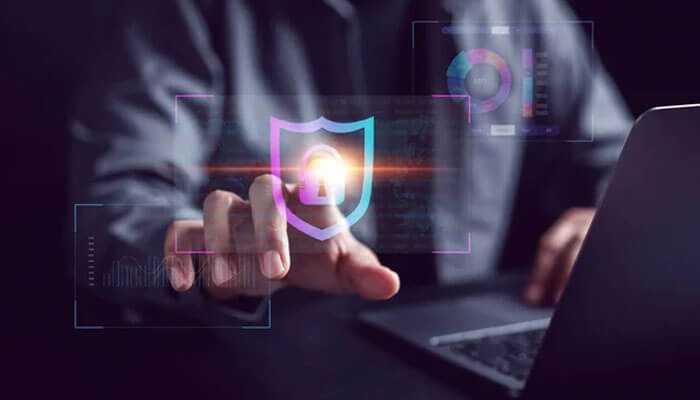In an era where digital transformation sweeps through every business sector, resilient cybersecurity has transformed from a siloed IT issue to a central business concern. Stories of breaches and cyber threats are commonplace; however, it’s not just the technology at stake but the very culture of the workplace that requires a resilience makeover. Establishing a strong cybersecurity posture is not merely about deploying advanced security tools like GoProxies or the latest antivirus software, but embedding a culture of security awareness and vigilance across the entire organization.
A resilient cybersecurity culture is one where every employee, from the C-suite to the intern, understands the role they play in safeguarding their company’s digital assets. This culture supports an environment where best practices in security are not only encouraged but are lived by everyone each day. Creating such an environment isn’t an overnight task; it requires strategy, persistence, and buy-in from all stakeholders.
Leadership Commitment
A culture of cybersecurity begins at the top. When leaders demonstrate a commitment to cybersecurity, it sets the tone for the entire organisation. This can involve regular communication about the importance of cybersecurity, personal adherence to security protocols, and investment in ongoing training and resources. Furthermore, leadership needs to manifest a clear vision and allocate the necessary resources to support cybersecurity initiatives.
Education and Awareness
Ignorance is the arch-nemesis of cybersecurity. Ongoing education on the latest threats and how to prevent them empowers employees to become proactive defenders of the network. Regular training sessions, cybersecurity newsletters, posters, and quizzes can keep the topic at the forefront of employees’ minds. Interactive learning experiences such as gamification and secure behaviour rewards can dramatically increase engagement and retention of knowledge.
Collaboration and Communication
Cybersecurity should not be relegated to the IT department alone; it requires collaboration across all departments. A resilient culture fosters open communication about security policies and encourages reporting potential threats without fear of retribution. A nurturing environment where employees feel comfortable sharing concerns or mistakes ensures quicker response times and a collective learning experience.
Policies and Procedures
Clearly written and easily accessible policies and procedures guide the workforce in understanding their role in cybersecurity. This includes password policies, incident response plans, and guidelines for safe internet use. Policies should be living documents, updated regularly to reflect the evolving cyber threat landscape and cryptographic changes.
Regular Risk Assessments and Audits
Frequent risk assessments can uncover vulnerabilities before they are exploited by attackers. This practice enables the continuous improvement of security measures and the resilience of the organisation. Additionally, regular audits ensure that cybersecurity policies are being effectively implemented and followed.
Embedding Security Into the Workflow
Creating a cybersecurity culture is also about integrating secure practices into the daily workflow. This can mean leveraging secure development practices in an IT environment, ensuring that security is a factor in project planning, or encrypting sensitive communications. By making security part of the normal way of working, it becomes less of an add-on and more of an inherent process.
Incident Response Preparedness
Even in the most secure environments, incidents can occur. Being prepared to respond quickly and effectively is imperative for resilience. Employees should be trained on who to notify and what steps to take in the event of a suspected breach. A concrete incident response plan ensures minimal disruption and faster recovery.
Encouraging a Speak-Up Culture
A resilient cybersecurity culture advocates a ‘see something, say something’ approach. Creating straightforward channels for employees to report suspicious activities without complications is vital. Ensuring that there is no blame culture in place when mistakes do occur encourages a more open and communicative environment.
Prioritising Secure Tools
In the tool-driven landscape of cybersecurity, it’s essential to prioritise the use of secure, reliable tools. Companies might choose security solutions like VPN to safeguard data transfer, ensuring that whatever tools they adopt are robust and fit for purpose. Evaluating the security features of tools before adoption should become a standard practice. Consider professional cybersecurity services.
Flexibility and Adaptability
The threat landscape is continuously evolving, and a static approach to cybersecurity is as good as no protection at all. Cultivating a culture that is flexible and able to adapt to new threats as they arise is critical. Encouraging innovative thinking and staying abreast of technological advancements help in building resilience.
Personal Responsibility and Accountability
On a fundamental level, a resilient cybersecurity culture promotes the idea that everyone is responsible for the organisation’s security. Individual accountability for cybersecurity can be fostered through clear expectations, performance metrics, and recognition for secure behaviour.
Reinforce the Message
Repetition is key in keeping cybersecurity at the forefront of employees’ minds. Regular briefings, reminders, and updates ensure that the message does not stagnate and become part of the background noise. Keep reinforcing the critical nature of cybersecurity through various internal communications avenues.
Conclusion
Building a resilient cybersecurity culture is not an option but a necessity in today’s digitised workplace. It’s about nurturing an environment where security is a reflex, not an afterthought. It’s an ongoing process, woven into the corporate fabric, requiring dedication, strategy, and a holistic approach. It calls for continuous education, open communication, effective policies, and the right tools to guard against the ever-changing threat landscape.
Encouragingly, a robust cybersecurity culture doesn’t just protect; it also adds value to the company by building trust with clients and partners, and by contributing to the stability and performance of the business as a whole. In this journey, technology, processes, and people must work in unison, transforming cybersecurity from a necessity into a strategic advantage. A resilient cybersecurity culture, therefore, becomes the backbone of a modern enterprise, securing not just data and systems but the integrity and future of the business itself.



